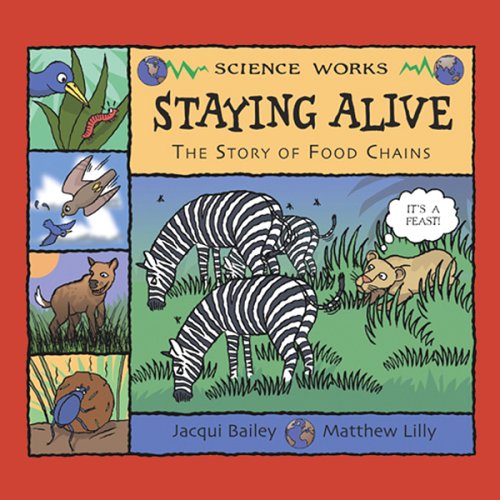-
Robots: The Story of Tools, Machines and Artificial Intelligence
Leonbattista Donati
Hardcover (Barnes & Noble Books, March 15, 1997)Robots: The Story of Tools, Machines and Artificial Intelligence (How Science Works)
-
How Do Chameleons Change Color?
Alonso Garcia
Paperback (Powerkids Pr, Aug. 15, 2017)Everybody knows that chameleons change color, but how do they do it? This book illuminates the magic of life science in action. Readers will be amazed by surprising facts, impressed by stunning photographs, and empowered by manageable text. Meeting Next Generation Science Standards with a unique spin on curricular subject matter, this book is a guaranteed jaw-dropper for young scientists. M
M
-
Cars,Trains/Other Land Vehicle
Nigel Hawkes
Paperback (Copper Beech, April 1, 2000)Outlines the basic science theory behind land transport, including how wheels and suspension work, how land transport vehicles are built, how their engines work, and how they are steered and controlled. S
S
-
Buildings
Alessandro Vignozzi
Hardcover (Barnes & Noble Books, March 15, 1997)English Text.Florence, 1995; hardback, pp. 48, col. ill. and plates, cm 22x29.(How Science Works). The main subject of this book is how homes, monuments, cathedrals and skyscrapers are built. It provides the historical background, and leading personalities in each area, with large illustrations which bring each building to life.
-
Staying Alive
Jacqui Bailey, Matthew Lilly
Paperback (A & C Black Publishers Ltd, July 1, 2007)None
-
How Do Beavers Make Dams?
Dorothy Jennings
Paperback (Powerkids Pr, Aug. 15, 2017)A beavers funny teeth and floppy tail are more than just decoration--theyre construction tools! Readers will unlock the mystery of dam building in this entertaining and educational text. Putting an unexpected twist on curricular science topics, this book is sure to grab readers attention. Readers are introduced to the study of life science with real-world examples. Colorful pictures make the information pop, and accessible language clarifies advanced concepts. M
M
-
Staying Alive: The Story of a Food Chain
Jacqui Bailey, Matthew Lilly
Paperback (Picture Window Books, Jan. 1, 2006)Explains how plants and animals are connected through a food chain. K
K
-
Biology Human Biology
Seymour Rosen
Paperback (Globe Fearon Co, Jan. 1, 1992)Workbook exercises and experiments guide the user to understand and explore the basic biological concepts in cells, how genes influence offspring, and the functions of the human body.
-
SCIENCE WORKSHOP SERIES:PHYSICAL SCIENCE/MATTER & ENERGY STUDENT'S EDITION 2000C
GLOBE
Paperback (GLOBE, Nov. 18, 1999)This program presents science concepts in areas of biology, earth science, chemistry, and physical science in a logical, easy-to-follow design that challenges without overwhelming. This flexible program consists of 12 student texts that can easily supplement an existing science curriculum or be used as a stand-alone course. Reading Level: 4-5Interest Level: 6-12 H
H
-
How Do Monarch Butterflies Find Their Way Home?
Kip Almasy
Paperback (Powerkids Pr, Aug. 15, 2017)"Monarch butterflies travel over 2,000 miles from Americas East Coast to central Mexico. Scientists are only beginning to unravel the mystery of the butterflys super navigational powers"-- T
T
-
Staying Alive: The Story of a Food Chain
Jacqui Bailey, Matthew Lilly
Library Binding (Picture Window Books, Jan. 1, 2006)Explains how plants and animals are connected through a food chain. K
K
-
A Drop in the Ocean: The Story of Water
Jacqui Bailey, Matthew Lilly
Library Binding (Picture Window Books, Jan. 1, 2004)Follows a drop of water as it cycles from droplet to vapor and back to water and describes its journeys in between. Includes activity. Q
Q